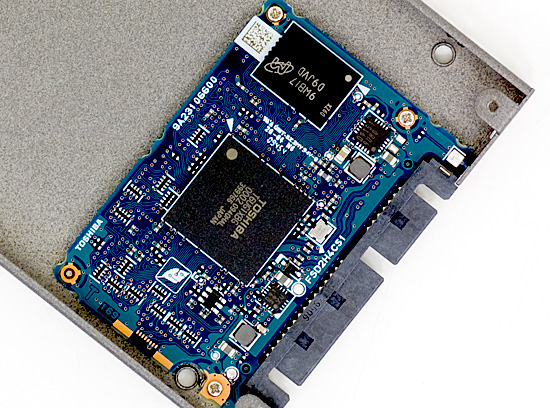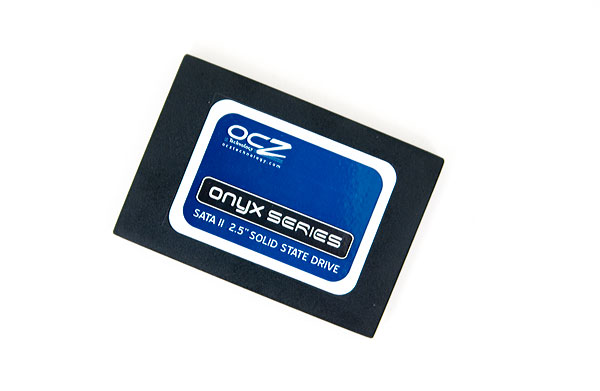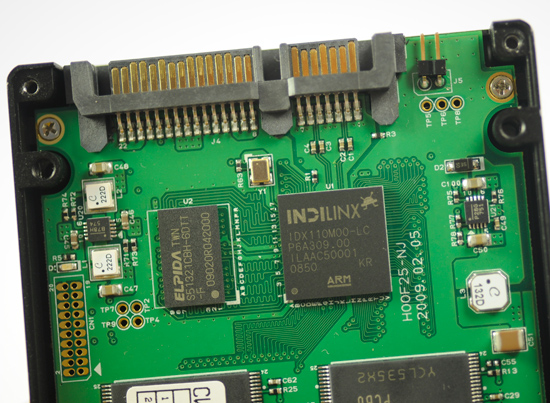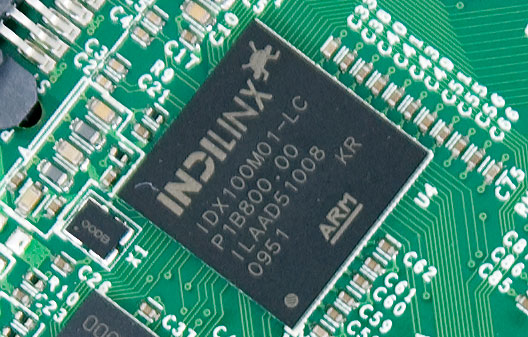2010 Value SSD (~$100) Roundup: Kingston and OCZ take on Intel
by Anand Lal Shimpi on June 3, 2010 12:01 AM ESTTwo years ago the best SSD you could buy was made by Intel and it cost $7.44 per GB of MLC NAND. Today Intel is actually the value leader. The 80GB X25-M G2 will set you back $205 at Newegg, or $2.56 per GB. The performance crown now belongs to companies like Micron and SandForce. Although Intel hopes to have performance leadership once more with its 25nm SSDs due out in Q4, the priorities have shifted. Intel’s focus is on bringing SSDs to the mainstream; it wants a bigger slice of the HDD pie. At the end of the day, that’s where the money is.
At just over $200 that’s affordable enough for high end notebooks and desktops but what about more mainstream price points? For many the $99 mark is key. Luckily as SSDs have gotten faster, a new breed of small, affordable SSDs have emerged right around the $100 mark. Today we’re going to take a look at three of those devices.
Intel’s X25-V 40GB
We’ll start off with Intel’s X25-V, currently only offered in a 40GB flavor. We’ve reviewed this drive before and it currently sells for $125 at Newegg. A bit more expensive than our other competitors, the X25-V uses Intel’s standard X25-M G2 controller but only has 5 of its 10 channels populated. The end result is a drive that performs similarly to the X25-M G2 in small file accesses but is about half the speed in large transfers.
The other disadvantage to the X25-V is its capacity. Intel uses all available capacity as spare area until it’s used up, which on a 40GB drive isn’t that much. Once you’ve got Windows 7 and a few applications on the drive you are lucky to have 15GB free. The less free space on the drive, the lower the controller’s performance will be and there are some areas where the X25-V will be less than half the speed of the X25-M G2.

The drive supports TRIM and comes with a 3-year warranty.
Kingston SSDNow V Series Boot Drive 30GB
Kingston used to sell a rebranded X25-V however in an interest to drive prices down even further Kingston switched to a cheaper Toshiba controller - the T6UG1XBG. The drive supports TRIM but not NCQ, which won’t be an issue for very light usage models but could be a problem for heavier workloads.

The most attractive part of the SSDNow V Series Boot Drive is its price. The drive alone will set you back $90 at Newegg, although you can get it in an upgrade kit for $115 (3.5" bay adapter). Like the X25-V, the 30GB drive comes with a 3-year warranty.
OCZ’s Onyx
The final drive in today’s roundup is the only one we haven’t previously reviewed here: OCZ’s Onyx. The Onyx uses an Indilinx Amigos controller, which is basically half of a Barefoot controller. You get four NAND channels instead of eight and maximum read/write speeds of 100/80MBps instead of 200/160 for Barefoot based drives.

The drive carries an $85 retail price for the 32GB version and comes with a 3-year warranty. OCZ also offers a 64GB version for $185.

Indilinx Barefoot

Indilinx Amigos
I owe OCZ an apology with regards to the Onyx. Here’s what happened. The first Onyx I got my hands on had a firmware bug that resulted in data corruption. A simple Windows install on my testbed revealed it. The install wouldn’t complete successfully. OCZ hadn’t seen the issue internally at first but eventually saw the same thing I did and immediately halted shipments. OCZ even contacted those customers who had received Onyx drives and replaced them.

The second Onyx I received supposedly fixed the data corruption bug I ran into before. It completed my Windows install but I got a CRC error during a SYSMark install. I incorrectly assumed that this was a problem with the Onyx drive once again and not an issue with my setup. I immediately contacted OCZ and told them that I was still having problems with the drive. After duplicating the same problem on another value drive it became clear that it was an issue with my SYSMark install and not the drive. I jumped to conclusions based on my previous experience with the Onyx drive without thoroughly testing the conclusion first. In fact, I did the very thing that we often accuse SSD makers of doing: not testing. In this case I wasn’t shipping a product but in my book, coming to a conclusion is the same thing. So to OCZ: I am sorry.
Now let’s get to the roundup.
| Value SSD Spec Sheet Comparison | |||||
| Intel X25-V | Kingston SSDNow V Series Boot Drive | OCZ Onyx | |||
| Controller | Intel 34nm | Toshiba T6UG1XBG | Indilinx Amigos | ||
| NAND | 40GB IMFT 34nm MLC | 32GB IMFT 34nm MLC | 32GB IMFT 34nm MLC | ||
| Channels | 5 | 4 | 4 | ||
| Sequential Read Speed | Up to 170MB/s | Up to 180MB/s | Up to 100MB/s | ||
| Sequential Write Speed | Up to 35MB/s | Up to 50MB/s | Up to 80MB/s | ||
| Random Read Speed | Up to 25K IOPS | Not Listed | Not Listed | ||
| Random Write Speed | Up to 2.5K IOPS | Not Listed | Not Listed | ||
| Warranty | 3-years | 3-years | 3-years | ||
| Price | $125 | $90 | $85 | ||
The Test
| CPU | Intel Core i7 965 running at 3.2GHz (Turbo & EIST Disabled) |
| Motherboard: | Intel DX58SO (Intel X58) |
| Chipset: | Intel X58 + Marvell SATA 6Gbps PCIe |
| Chipset Drivers: | Intel 9.1.1.1015 + Intel IMSM 8.9 |
| Memory: | Qimonda DDR3-1333 4 x 1GB (7-7-7-20) |
| Video Card: | eVGA GeForce GTX 285 |
| Video Drivers: | NVIDIA ForceWare 190.38 64-bit |
| Desktop Resolution: | 1920 x 1200 |
| OS: | Windows 7 x64 |










49 Comments
View All Comments
loimlo - Thursday, June 3, 2010 - link
Despite the same controller, SSDNOW V+ series enjoys better flash memory, thus faster speed, compared to SSDNOW V. That said, I'd purchase Intel G2 rather than SSDNOW V+ given the cost difference is next to none, but performance is better on Intel side. SSDNOW V occucpies better position in comparison to SSDNOW V+ on the market.OK, NOW I'll show you the proof of Toshiba controller in Kingston's SSD across the web reviews.
http://techreport.com/articles.x/18757
"Kingston's SSDNow V+ series is our first glimpse of Toshiba's T6UG1XBG controller"
http://www.legitreviews.com/article/1242/2/
"Toshiba T6UG1XBG SSD controller that is being used on the 30GB boot drive. This is the same exact controller that is used on the higher performing Kingston V+ Seires of SSDs,"
http://www.anandtech.com/show/2968/intel-s-x25-v-k...
"The Toshiba T6UG1XBG controller on this drive is the same controller used in the latest Kingston SSDNow V+ Series drives. "
http://www.legitreviews.com/article/1197/2/
"The heart and soul of all Kingston V+ Series SSDs is the Toshiba T6UG1XBG SSD controller pictured above."
Phate- - Thursday, June 3, 2010 - link
So the Toshiba controller is actually the JMicron controller?Quote:
"It's tough to see and even tougher to photograph but stenciled on the controller chip are the letters T-O-S-H-I-B-A which apparently is a JMicron JMF618 controller but branded as Toshiba as they are the manufacturer. This controller does support TRIM for those running Windows 7."
http://www.legitreviews.com/article/1237/2/
And 140 euro for a the Kingston V S2 64GB or 210 euro for the Intel Postville 80GB, that is quite a difference. The cost difference is huge.
I think your making some kind of mistake, the huge advantage of the Kingston V S2 series is that it is a lot cheaper. There are four "different" drives: The V, the V+, the V+ S2 and then the V S2.
loimlo - Thursday, June 3, 2010 - link
First, I'm comparing price of V+ to Intel G2, not V to G2. Second, Toshiba/WD's controller isn't identical to JMicron's reference design mainly because of their in-house firmware tweaks. You can compare Kingston, WD, and JMicron reference design and later you'll find differing speed despite the same IC under the hood in the review(hint: Anandtech's excellent SSD reviews). Last, but not the least, I know there's 2nd generation of Kingston's SSDs, but Kingston still calls them SSDNOW V and SSDNOW V+ on the official website. Kingston never calls V G2 or V+ G2 for their SSD products. In other words, Kingston adopts the very similar way to WD which doesn't explicitly tell the difference between previous and next generation products. You need to specify product model like SNV125S2(30GB)/SNV425S2(64/128GB) to ensure it's V "G2". OK, I've to admit that I've done a lot of work before purchasing a 2nd generation SSDNOW 64GB for myself a few days ago.http://www.kingston.com/ssd/default.asp
Phate- - Thursday, June 3, 2010 - link
I know that firmware is very important, but I've seen no mention of the fact that it all in all is still the same controller, just with different firmware. Annoyingly enough. (If that is even correct.)And well, you should look at V-series pricing, that's where this debate started. ;) My whole argument is based solely on the point that the new (S2) V-series are very competative in the ssd market, solely based on their competative pricing. As stated above, over here, you can pick up an 64GB S2 V-series for 70 euros less then the intel postville 80GB, which is quite a lot.
And the fact that we are having this discussion makes it even more interesting to properly discuss these ssd's on Anandtech.
loimlo - Thursday, June 3, 2010 - link
Well, you seem to misunderstand my words. I do think V series is better than V+ in terms of price-to-capacity ration. I'll quote what I wrote before."SSDNOW V occucpies better position in comparison to SSDNOW V+ on the market"
", I'd purchase Intel G2 rather than SSDNOW V+"
Also, I've purchased SSDNOW V series 64GB, so you know my decision.
Btw, I'd like to show my respect and thanks to Anand who made this review and clarified Kingston's TRIM which is missing in previous budget SSD review -- Intel's X25-V & Kingston's 30GB SSDNow V Series: Battle of the $125 SSDs.
MrSpadge - Thursday, June 3, 2010 - link
I wonder what kind of real world application performance one would get using a normal HDD and one of these small SSDs as Win 7 ReadyBoost drive. Pretty much everything you normally use should be in the cache then, except the video and music collection and games you haven't touched for months.7Enigma - Thursday, June 3, 2010 - link
I'm glad you mentioned this in the conclusion. I've said it before but for most of the smaller capacity drives (<200GB), and ESPECIALLY these tiny drives, they will predominantly be used as boot drives with secondary large storage mechanical HDD's. Sure someone might put one in a laptop/netbook if they only use it to surf the web, but due to the capacity contraint I really feel these are the perfect-sized drives for desktops that have an extra HDD for mass storage.In that case the Random performance and specifically the READ performance is paramount and shows just how good this Intel drive is (if you can justify the higher cost). I personally feel for this group the StorageBench data is pretty much worthless due to the unlikely usage pattern.
With that said, I think the wait approach is key. Unless you are building a system today waiting for the 80gig 25nm models to come out is a no-brainer. My 80gig G2 Intel SSD is the perfect size IMO for most people as a boot/small set of games/software drive, and to have that for $100 is a STEAL.
I just built my dad a gaming/editing desktop and the combination of an 80gig Intel G2 and 1TB secondary HDD for under $300 total is just about unbeatable.
semo - Thursday, June 3, 2010 - link
good luck waiting for the 80GB G3s. It is very likely that this will be a very popular drive and will be even harder to get than the G2s when they came out. That's assuming Intel does actually release it on time.I doubt Intel will make such a drastic cut in price this time around since they know the G3s will sell like hotcakes. They might just wait for the competitors to match their performance figures before they start dropping prices (just like in the CPU arena). Or, if we're lucky they might choose to dictate the market and enter at a low price again (depends how badly they really want to get in to the mainstream).
Anosh - Thursday, June 3, 2010 - link
Something that is (just about) never mentioned/measured in these test are the life of the SSDs.How long can I expect the drive to last? I've been reading on forums about people's SSD drives dying after six months!
StormyParis - Thursday, June 3, 2010 - link
MS is taking their own sweet time to come out with ReadyBoost for SSD. In the mean time, would it be possible to benchmark a small, OS-only SSD vs USB3 Readyboost ? I'm wondering what makes more sense, the dumb approach of putting everything on a SSD? or intelligent caching. I'm guessing USB3 levels the playing field for ReadyBoost ?